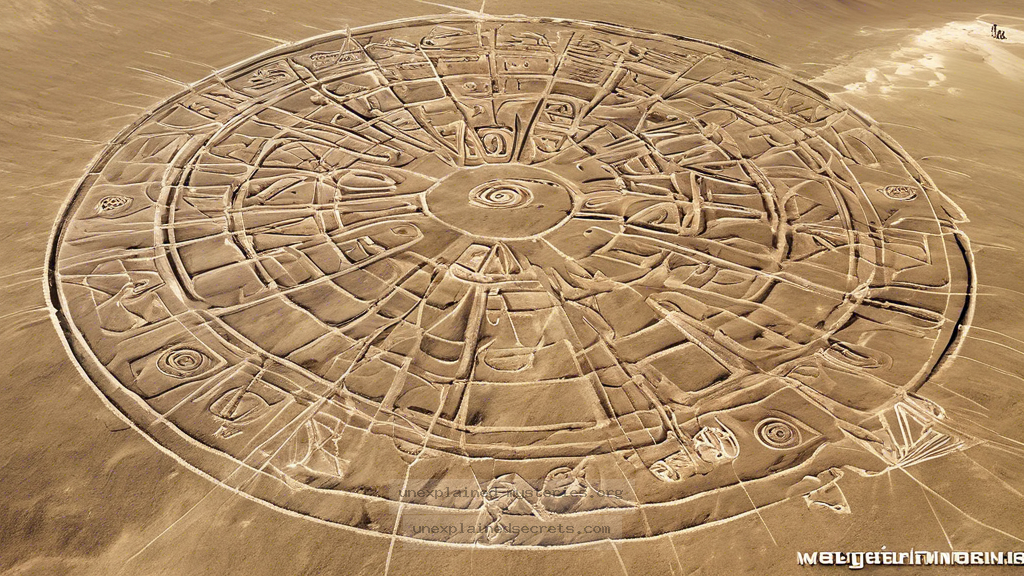What Secrets Lie Behind the Nazca Lines: Ancient Art or Astronomical Calendar?
What Secrets Lie Behind the Nazca Lines: Ancient Art or Astronomical Calendar?
The Nazca Lines, a series of geoglyphs etched into the arid plains of southern Peru, continue to perplex archaeologists, historians, and enthusiasts alike. Stretching over 1,000 square kilometers, these enormous designs, depicting everything from simple geometric shapes to complex figures of animals and plants, have sparked speculation about their purpose since their discovery in the 1920s. Are they ancient art created for aesthetic purposes, or do they serve a more profound function, such as an astronomical calendar? This question matters not only for our understanding of ancient civilizations but also for how we perceive human ingenuity throughout history. With modern technology uncovering more about these enigmatic creations, the quest for understanding the Nazca Lines remains an exciting and ongoing investigation.
The Historical Context of the Nazca Lines
The Nazca Lines were created between 500 BC and 500 AD by the Nazca culture, a civilization that thrived in the region during this time. The Nazca people were adept at agriculture, utilizing advanced irrigation techniques to cultivate the arid land. The lines were crafted by removing the top layer of reddish-brown iron oxide-coated pebbles, revealing the lighter-colored earth beneath. Most of these geoglyphs are about 12 to 15 cm deep, but they can span hundreds of meters in length, making them visible from the air. Historical accounts suggest that the Nazca people engaged in religious practices, and the lines may have served as pathways or ceremonial routes, connecting various sacred sites.
Core Concepts: Art or Astronomical Calendar?
The debate surrounding the purpose of the Nazca Lines often centers around two main theories: that they are either artistic expressions or astronomical calendars. Proponents of the artistic theory argue that the lines served religious or ceremonial purposes, possibly meant to be seen by deities or spirits in the sky. This theory is supported by the presence of nearby ceremonial sites and the intricate designs that reflect the Nazca people’s cultural motifs.
Conversely, the astronomical calendar theory posits that the lines were used to track celestial events, such as solstices and equinoxes. Researchers have identified alignments between certain geoglyphs and solar or lunar events. For instance, the “Hummingbird” geoglyph is said to align with the sunset during the winter solstice, suggesting a sophisticated understanding of astronomy by the Nazca civilization. This theory implies a level of scientific knowledge that was previously underestimated in ancient cultures.
Practical Implications of the Nazca Lines
Understanding the purpose of the Nazca Lines has significant implications for how we view ancient cultures. If the lines are artistic representations, they reflect a society rich in cultural expression, spirituality, and social organization. On the other hand, if they functioned as an astronomical calendar, they indicate advanced scientific knowledge and a deep connection to celestial events. This knowledge challenges the notion that ancient societies were primitive or solely reliant on basic survival tactics.
Evidence Supporting the Astronomical Theory
Several lines and figures have been studied in detail to support the astronomical alignment theory. For instance, a study by the German archaeologist Maria Reiche in the 20th century revealed that many geoglyphs align with the sun’s path during solstices. More recent technological advancements, including aerial photography and satellite imaging, have allowed researchers to analyze these alignments more accurately.
| Geoglyph | Alignment | Significance |
|---|---|---|
| Hummingbird | Winter Solstice Sunset | Indicates seasonal changes |
| Spider | Summer Solstice Sunrise | May reflect agricultural cycles |
| Tree | Equinox Events | Possible ritual significance |
Alternative Perspectives: Cultural and Spiritual Significance
While the astronomical calendar theory is compelling, it is crucial to consider other perspectives that emphasize the cultural and spiritual significance of the Nazca Lines. Many researchers argue that these geoglyphs were integral to the Nazca’s religious practices, serving as offerings to the gods or as markers for pilgrimage routes. This perspective aligns with findings at nearby ceremonial sites, where artifacts and remains suggest ritualistic activities.
Moreover, some indigenous groups in the region believe that the lines are part of a larger spiritual landscape, representing the connection between the earth and the heavens. These beliefs underscore the need to approach the Nazca Lines holistically, considering not just their physical attributes but also their cultural importance.
Common Misconceptions and Clarifications
One common misconception about the Nazca Lines is that they were created solely for the benefit of extraterrestrial beings or visitors. This theory, popularized by pseudoarchaeologists, lacks credible evidence and undermines the achievements of the Nazca civilization. In reality, the lines exemplify human creativity and ingenuity rather than alien intervention.
Another misconception is the belief that all geoglyphs are meant to be viewed from the air. While many are indeed best appreciated from above, others may have held significance for those on the ground, possibly serving as markers for ceremonial processes or community gatherings. Understanding the context in which these geoglyphs were created is crucial for interpreting their purpose accurately.
Best Practices for Studying the Nazca Lines
For those interested in investigating the Nazca Lines, several best practices can enhance understanding and appreciation of these ancient geoglyphs:
- Engage with Local Experts: Collaborate with archaeologists and local historians to gain insights into the lines’ cultural contexts.
- Utilize Technology: Employ aerial photography and GIS technology to map and analyze the geoglyphs.
- Respect Indigenous Knowledge: Incorporate local beliefs and traditions into research to provide a more rounded perspective.
Future Developments and Ongoing Research
Research into the Nazca Lines is far from complete, with ongoing studies aiming to uncover more about their purpose and significance. Recent advancements in technology, such as LiDAR (Light Detection and Ranging), are being used to uncover buried geoglyphs and better understand the landscape’s alterations over centuries.
Moreover, interdisciplinary collaborations between archaeologists, astronomers, and anthropologists are becoming increasingly common, allowing for a more comprehensive understanding of the Nazca Lines. As new findings emerge, the lines continue to captivate the imagination and challenge our understanding of ancient civilizations.
Conclusion: The Enigmatic Legacy of the Nazca Lines
The Nazca Lines remain one of the most captivating mysteries of ancient history. Whether viewed as artistic expressions or astronomical calendars, they serve as a testament to the ingenuity and complexity of the Nazca civilization. As research continues, the lines offer new avenues for exploration and understanding, reminding us that the past holds secrets waiting to be uncovered. The debate over their purpose may persist, but one thing is clear: the Nazca Lines are more than mere geoglyphs; they are a bridge connecting us to the ancient world and its profound mysteries.
Other Articles
Recent Posts
- What Happened to Flight MH370? The Conspiracy Theories That Still Haunt Us
- What Secrets Lurk Within the Walls of the Infamous Trans-Allegheny Lunatic Asylum?
- What Evidence Supports the Existence of Bigfoot in the Pacific Northwest?
- What Happened to the Indus Valley Civilization? Unraveling the Mysteries of Ancient Urban Life
- Can Telepathy Be Scientifically Proven Through Laboratory Evidence?







